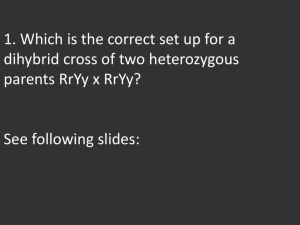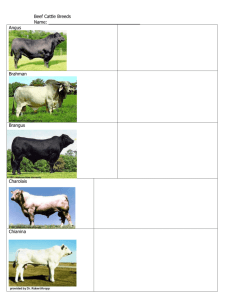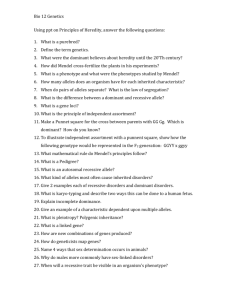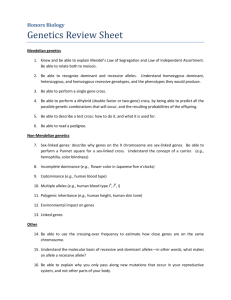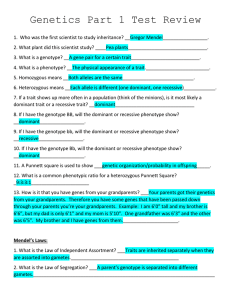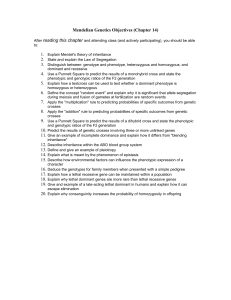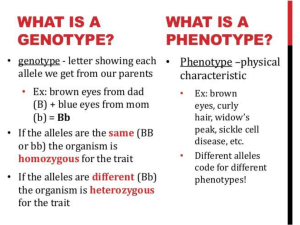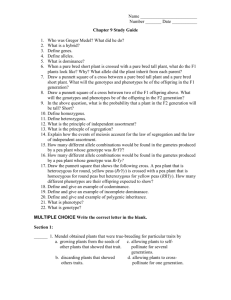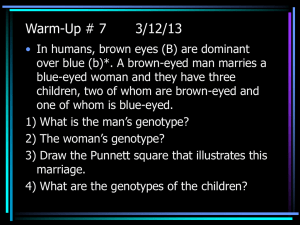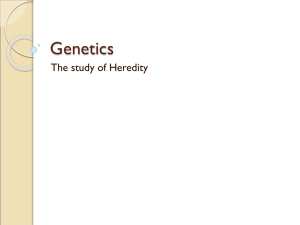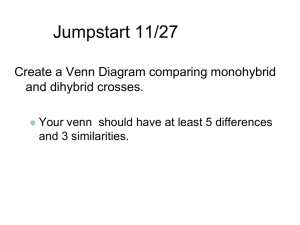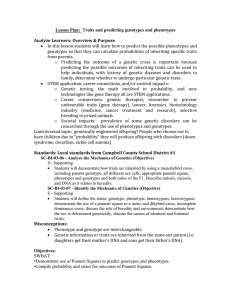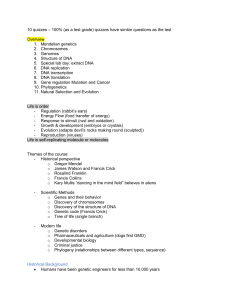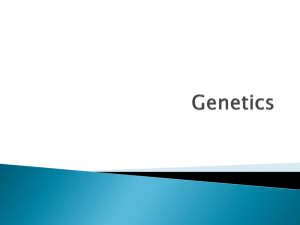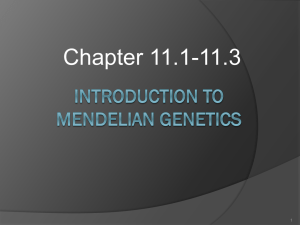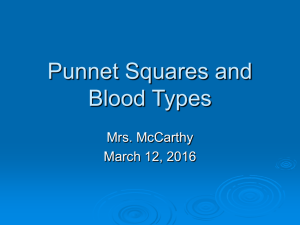Dihybrid Crosses Clicker Questions
advertisement
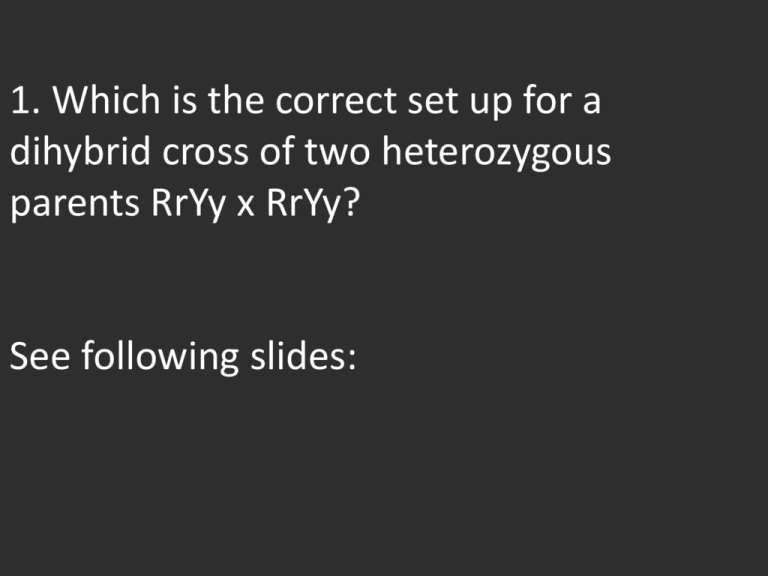
1. Which is the correct set up for a dihybrid cross of two heterozygous parents RrYy x RrYy? See following slides: A RR YY Yy yY yy rR Rr rr B. R R r Y y r Y y C. RY RY Ry rY ry Ry rY ry The correct set up for a heterozygous dihybrid cross is A. A B. B C. C • Each side of a Punnett Square represents all the possible alleles in a gamete from each parent. • Parent gametes always contain one allele for each gene. (one R or r and one Y or y in this case). • Four possible combinations of the alleles for the two genes are possible- RY, Ry, rY and ry. 2. For the Punnett square of RrYy x RrYy, what phenotype ratio would be expected in the offspring? A. B. C. D. 1:1:1:1 9:3:3:1 3:1 1:2:1 R= Round (dominant) r = wrinkled (recessive) Y= yellow seeds (dominant) y = green seeds (recessive) Dominant for both : Dom 1st/Rec. 2nd : Rec for 1st/Dom. for 2nd : Recessive for both 9 : 3 : 3 : 1 3. The 9:3:3:1 ratio for a heterozygous dihybrid cross will apply if A. the traits are on separate chromosomes B. the traits are closely linked on the same chromosome C. Either A or B D. Neither A nor B A dihybrid Punnett square assumes that all 4 gamete combinations are equally likely. This will occur if the two genes are on different chromosomes. Independent assortment will make all 4 combinations equally likely. When two genes are on the same chromosome, genetic recombination can occur due to crossing over. However, if the two genes are close together on the chromosome, the recombinants will not be equally like as the original combination. 4. Determine the phenotype ratio for a cross between GgHh and gghh. A. B. C. D. E. 9:3:3:1 1:1:1:1 3:1:3:1 1:2:1 3:1 GH Gh gH gh gh GgHh GGhh ggHh gghh Don’t need to fill out additional rows. All gametes of gghh will be gh. Ratio of 1:1: 1:1 25% chance dominant phenotype for both traits 25% chance dominant for G, recessive for h 25% chance recessive for g, dominant for H 25% chance recessive for both 1. C 2. B 3. A 4. B
